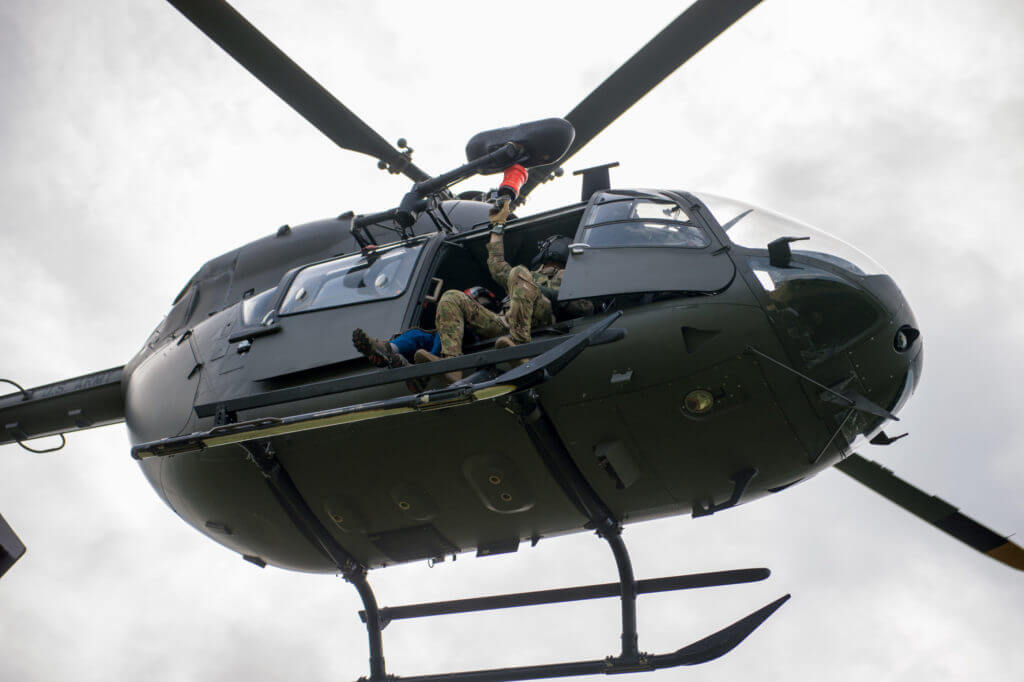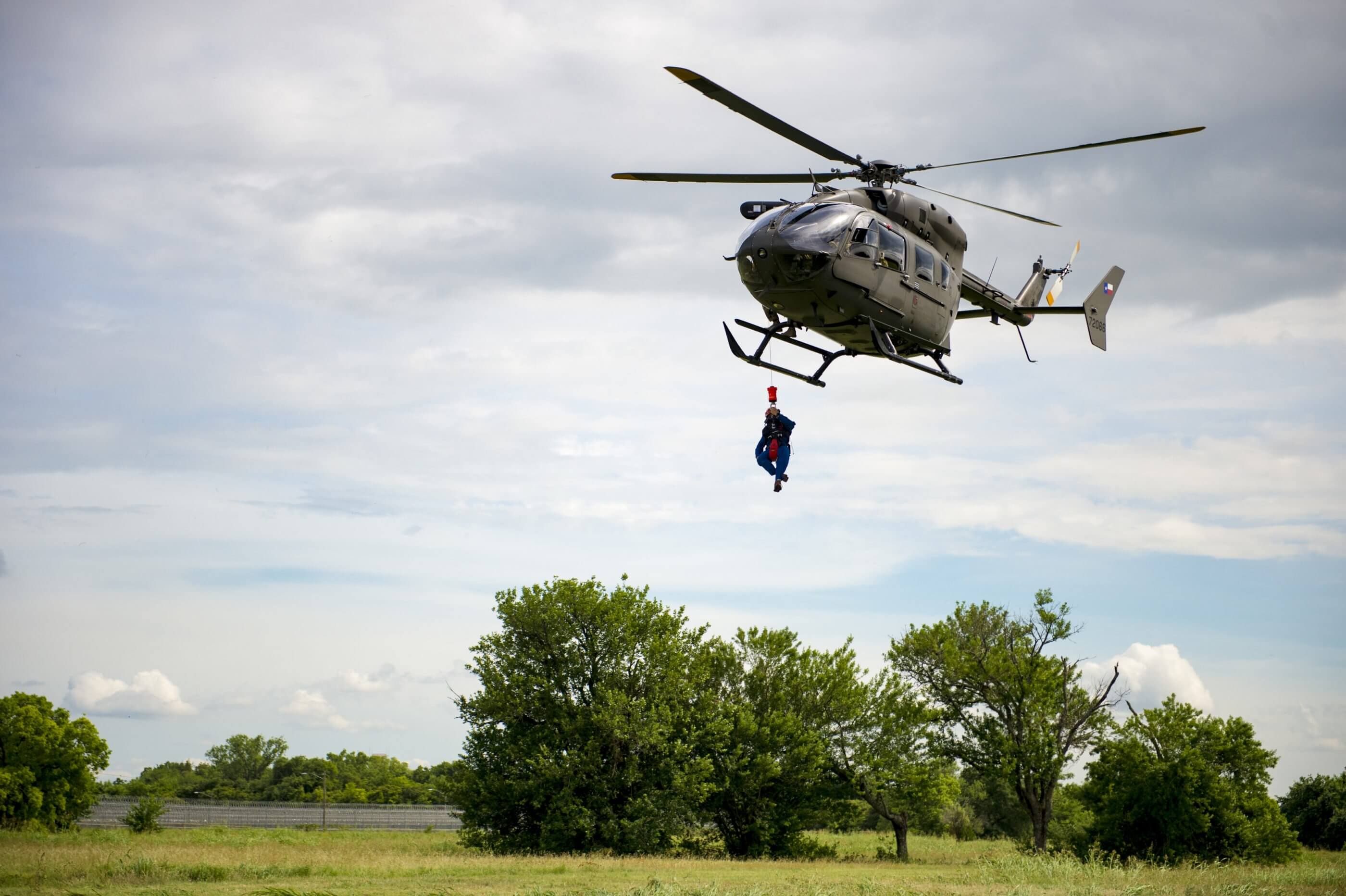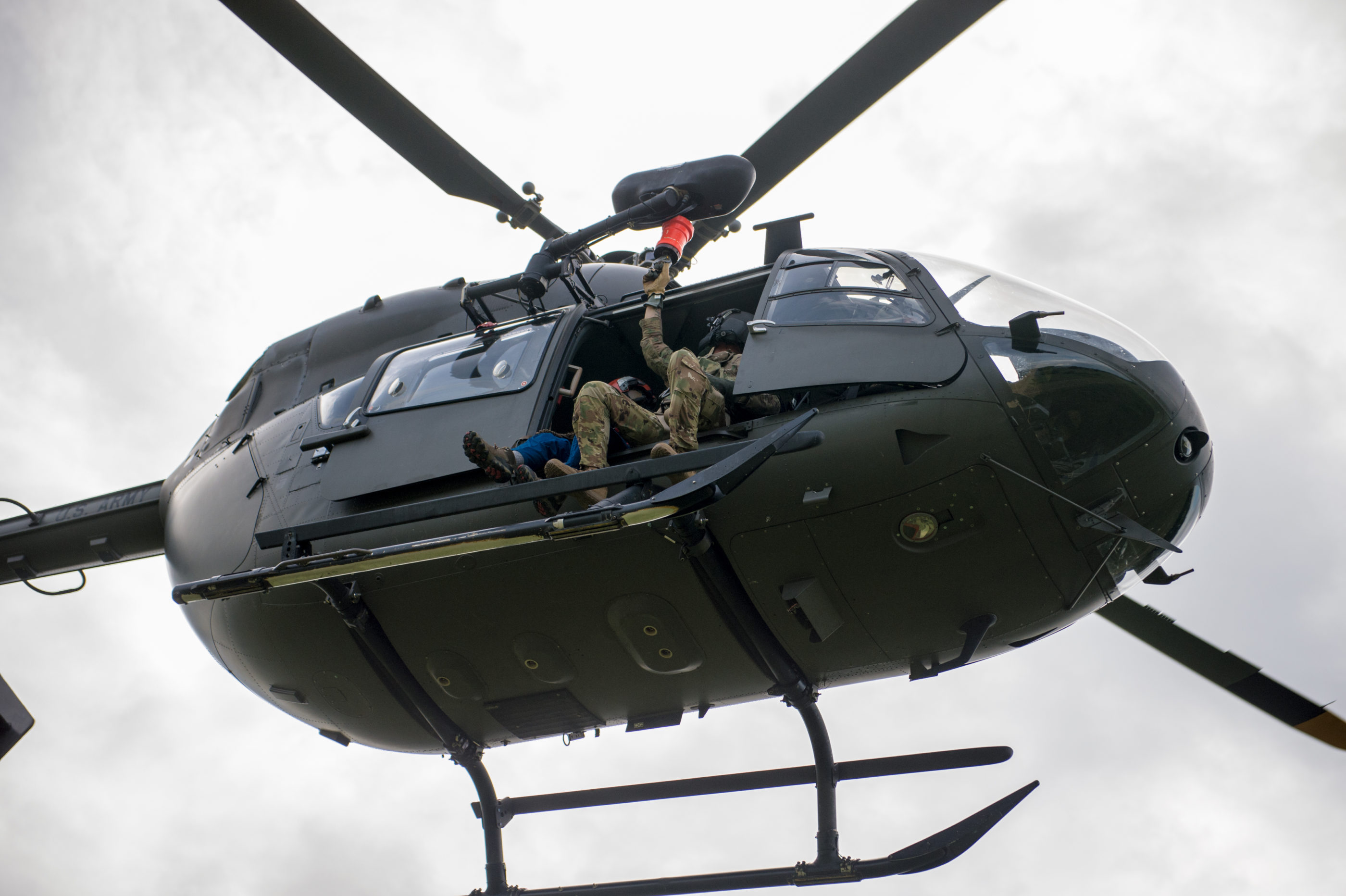The UH-72A Lakota is the U.S. Army’s multi-mission helicopter. Selected in June 2006, the Lakota is based on the commercial off-the-shelf (COTS) Airbus H145 light twin multimission helicopter.
Somewhat unique for major U.S. defense programs, the Airbus-built UH-72 Lakota is one that hovers along without much budgetary fuss. It is now the primary training helicopter for all U.S. Army pilots.
Much of the program’s success is due to the Army’s decision to buy a commercial helicopter and alter it for military utility missions instead of developing a new airframe for the purpose.
Brian Diaz is the Airbus resident UH-72 guru at Fort Rucker, the Army’s Aviation Center of Excellence and its rotorcaft school. He joins Rotor Radio to discuss the helicopter, its history with the Army and how it’s used to train future military rotorcraft pilots.
Since 2006, the twin-engine UH-72A Light Utility Helicopter has been used for a variety of missions including border patrol, medevac, troop and VIP transport, light cargo, and homeland security.
More than 440 Lakotas have been delivered to the Army since an initial contract for 345 UH-72s was awarded in 2006. Airbus in August delivered the 200th UH-72 to the Army Aviation Center of Excellence at Fort Rucker, Alabama.

The aircraft initially were fielded to National Guard units for a variety of missions. The Lakota became the primary training helicopter for all Army rotorcraft pilots as part of the Aviation Restructure Initiative aimed at moving combat aircraft like the AH-64 Apache and UH-60 Black Hawk from reserve to active Army units.
As part of the ARI, the legacy TH-67 training helicopter was scrapped in favor of the Lakota, which was officially designated the Institutional Training Helicopter. Accordingly, the Army in 2013 decided to increase its UH-72 fleet by 110 aircraft, from 317 to 427 helicopters and has continued to increase the total fleet number in small batches of more than a dozen aircraft at a time.
More than 1,500 Army pilots have trained on the Lakota, according to Airbus. The U.S. military’s fleet has amassed more than 600,000 total flight hours.










